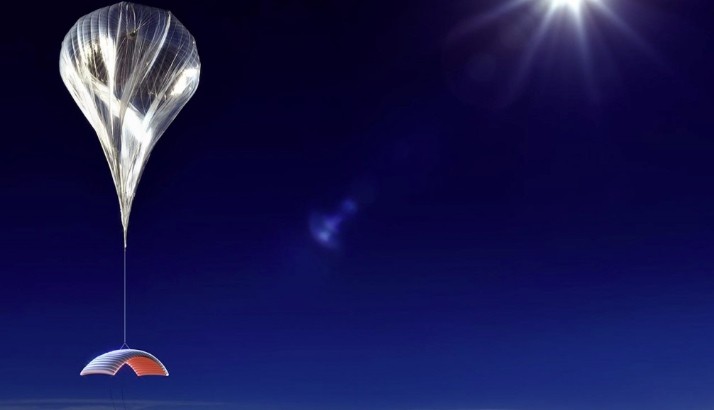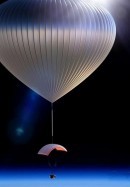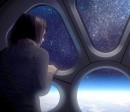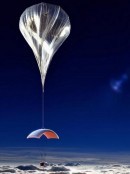Arizona-based company World View Enterprises has successfully tested a 10% scale model of the future World View system. The huge balloon will gently fly its voyageurs to the edge of space and back, in late 2016. The expedition is to become the most affordable one to exist so far, less than the third of the cost of Virgin Galactic’s.
Forget driving hypercars or electric airplanes around the planet, we all know the final frontier is space, so that’s where everybody is trying to go. With the successful test on Tuesday, the company designing the World View system is just getting closer and closer to the moment when traveling at the edge of the planet will become an affordable adventure for anybody to chase after. Affordable and in style, we might add.
World View’s high-altitude balloon lets its passengers gently soar for hours on end in a comfortable, smartly-outfitted, specially designed space capsule. The company’s engineers want to offer an accessible way for a nearspace view, while experiencing an expedition of a lifetime.
World View was created so that normal people around the world would get the chance to experience what only a few astronauts have been experiencing in more than fifty years, also known as the Overview. According to it’s creators, astronauts have spoken poignantly of the life-changing shift that results from seeing the world with this unique vantage. It’s the moment when national boundaries vanish, the conflicts that divide us seem to disappear and the need to protect the blue planet becomes both obvious and imperative.
As to the people working at the project, the team includes a retired NASA Astronaut, a former NASA Associate Administrator for Science, Biosphere 2 designers and crew members, International Space Station scientists, world experts in high-altitude ballooning and human spaceflight, as well as luxury and travel professionals.
The Voyageur balloon with the capsule can go 19 miles (30 kilometers) high and will not reach the boundary of space, standing at 62 miles (100 kilometers). As to the test model scale, called Tycho, it flew to an altitude of 22 miles (36 kilometers) on a balloon flight on June 18 that lifted off near Roswell, New Mexico. The vehicle then descended to 9 miles (15 kilometers), where it deployed a parafoil to glide the rest of the way back to surface. According to the company, this set the record for the highest parafoil flight ever.
Tycho is the size of a small refrigerator, but the company’s engineers say they could finish the actual device and begin the first commercial flights in 2016. As to the price, one ticket will cost $75,000, about the third of what the Virgin Galactic costs.
World View’s high-altitude balloon lets its passengers gently soar for hours on end in a comfortable, smartly-outfitted, specially designed space capsule. The company’s engineers want to offer an accessible way for a nearspace view, while experiencing an expedition of a lifetime.
World View was created so that normal people around the world would get the chance to experience what only a few astronauts have been experiencing in more than fifty years, also known as the Overview. According to it’s creators, astronauts have spoken poignantly of the life-changing shift that results from seeing the world with this unique vantage. It’s the moment when national boundaries vanish, the conflicts that divide us seem to disappear and the need to protect the blue planet becomes both obvious and imperative.
As to the people working at the project, the team includes a retired NASA Astronaut, a former NASA Associate Administrator for Science, Biosphere 2 designers and crew members, International Space Station scientists, world experts in high-altitude ballooning and human spaceflight, as well as luxury and travel professionals.
The Voyageur balloon with the capsule can go 19 miles (30 kilometers) high and will not reach the boundary of space, standing at 62 miles (100 kilometers). As to the test model scale, called Tycho, it flew to an altitude of 22 miles (36 kilometers) on a balloon flight on June 18 that lifted off near Roswell, New Mexico. The vehicle then descended to 9 miles (15 kilometers), where it deployed a parafoil to glide the rest of the way back to surface. According to the company, this set the record for the highest parafoil flight ever.
Tycho is the size of a small refrigerator, but the company’s engineers say they could finish the actual device and begin the first commercial flights in 2016. As to the price, one ticket will cost $75,000, about the third of what the Virgin Galactic costs.







